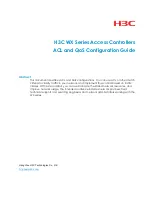
d)
External connection
To connect via the Internet:
-
Have an external IP address on the router assigned by your ISP, and have the possibility to
connect externally (incoming packets are not blocked by the ISP’s firewall),
-
Forward any two ports (must be one after the other) to the IP address of the controller working
in the internal network, and to ports 50000 and 50001 UDP/TCP (port forwarding)
-
Unblock the selected ports on the router firewall
-
The address of the controller/controllers on the internal network cannot change (the
controller must have the address set statically or the DHCP server in the network must assign
the same IP address to the same devices every time).
Most routers on the market usually have several parameters in the port forwarding options.
These are:
Ÿ
Name of forwarding
(any)
Ÿ
Forwarding port
(or range of ports)
Ÿ
Protocol type
(TCP/UDP or both)
Ÿ
Local IP address
(to which you want to forward)
FOR EXAMPLE:
1.
One device/controller operates on the internal network
Assumptions:
Ÿ
Name of forwarding
: it can be arbitrary but different for any forwarding
Ÿ
External IP address
: 188.188.188.188 (here, for example, replace it with the address
received from the ISP)
Ÿ
Forwarded ports (from the Internet)
: 50000 and 50001
Ÿ
IP address on the local network (controller address)
: 192.168.0.50
Ÿ
Destination ports (for the controller)
: 50000 and 50001
Ÿ
Protocol:
TCP/UDP (sometimes you can find the following options:
“Both”, “All”, etc.)
The port with the lower address must be forwarded to the lower destination address of the
controller, and the port with the higher address - to the higher destination address of the
controller. If the port range setting option is not available, you need to create two forwarding rules
for each port individually (for 50000 and 50001).
Then, to connect to the controller via the Internet, in the application window "Connect to device" in
the "Address" field enter the IP address of the router (assigned by your ISP), which in this case is
188.188.188.188, and in the "port” field enter the lower of the forwarded ports, in this case port
50000.
See: figure on the next page.
14















































